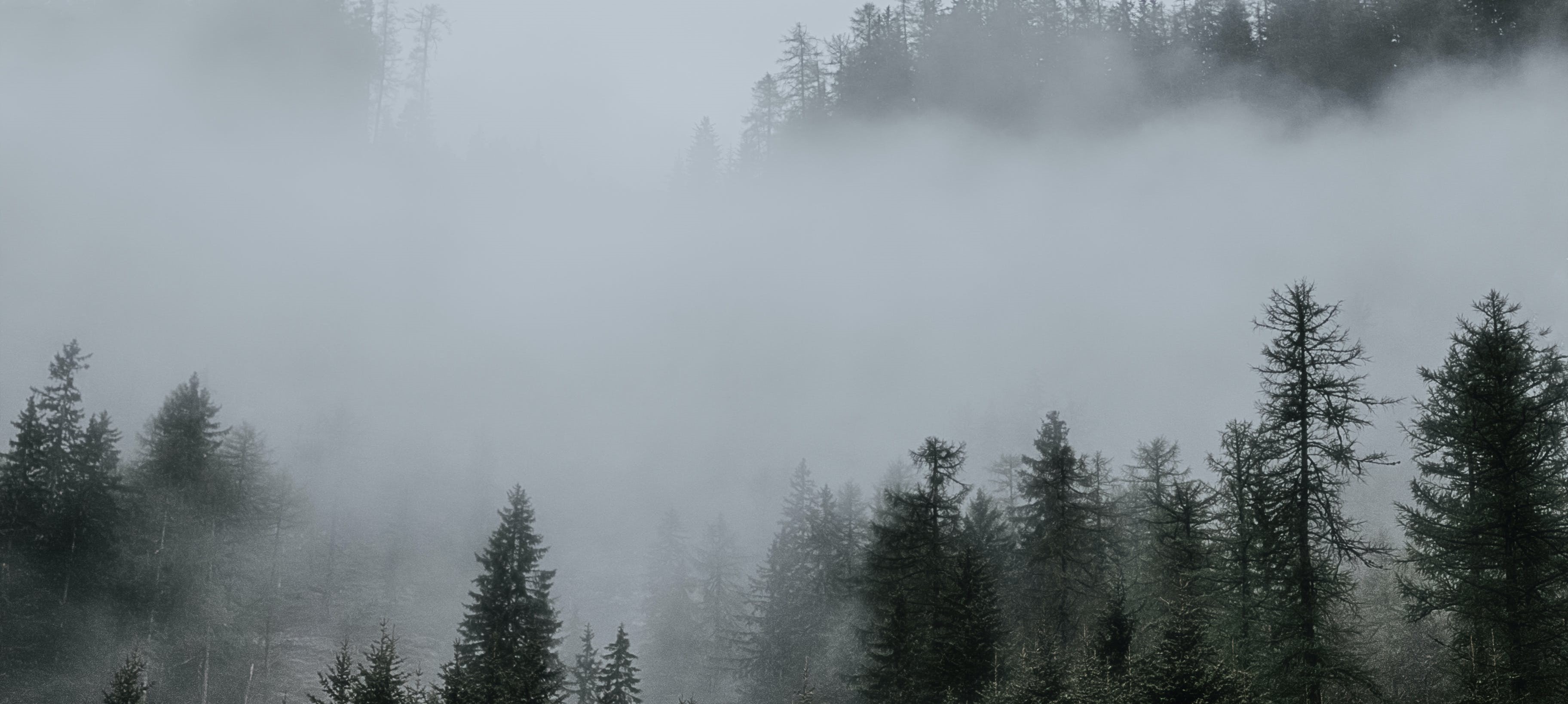One of the tallest tree species on Etharai, the fogpiercer pine grows in the
fogswept forest. Its name comes from the fact that in an aerial view of the forests, especially on days with heavier fog, these trees are all that is visible of the forests through the fog - the only thing tall enough to be seen. The wood from these trees is soft and porous, making it a poor building material. However, its needle-like leaves have a fresh and earthy taste to them, and can be used as a seasoning.
Anatomy
Fogpiercer pines have grey-brown bark that is constantly peeling, often exposing the darker grey wood beneath it. The ashy colour of the wood comes from the dust particles carried in the vater vapour of the fog, which the porous bark absorbs. This means that the air surrounding these trees tends to be clearer and cleaner, a rare respite for those lost in the forests. The needles of the fogpiercer pine are long and thin, with jagged, yet not too sharp, edges. These needles grow in clusters, and are blue-green in colour. They can be found coating the forest floor near more densely-populated areas of fogpiercers, and are a recognisable feature of the forests.
Integral Habitats
Many of the smaller critters of the fogswept forests use the fogpiecer pine for their homes. Birds and squirrels make their nests in holes and knots of the tree, using discarded bark to build their home. Snakes and other burrowing animals find shelter digging their homes beneath its roots, where larger predators cannot dig to find them.
Fogpiercer Needles
Some species in the fogswept forests are known to collect the fogpiercer pine's needles, using them to craft nests, or make bedding. They are also eaten by a fair few species, as there is no shortage of these leaves that can be found littering the forest. Some corvids have also learned to use dried pine needles as a primitive tool, its length and sturdiness valuable.




I love how evocative their name is. Really works with the cover image too.
Explore Etrea | March of 31 Tales
:D